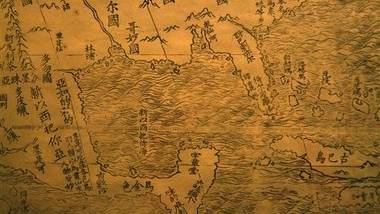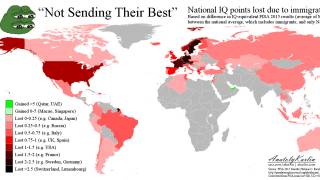Rare map, with China at the centre of world, goes on display
Source: google.com

A rarely seen 400-year-old map that identified Florida as "the Land of Flowers" and put China at the centre of the world went on display Tuesday at the Library of Congress.
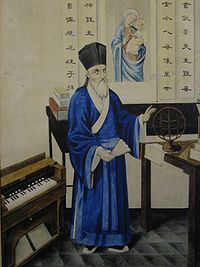 The map created by Matteo Ricci was the first in Chinese to show the Americas. Ricci, left, a Jesuit missionary from Italy, was among the first westerners to live in what is now Beijing in the early 1600s. Known for introducing western science to China, Ricci created the map in 1602 at the request of Emperor Wanli.
The map created by Matteo Ricci was the first in Chinese to show the Americas. Ricci, left, a Jesuit missionary from Italy, was among the first westerners to live in what is now Beijing in the early 1600s. Known for introducing western science to China, Ricci created the map in 1602 at the request of Emperor Wanli.Ricci's map includes pictures and annotations describing different regions of the world. Africa was noted to have the world's highest mountain and longest river. The brief description of North America mentions "humped oxen" or bison, wild horses and a region named "Ka-na-ta."
Several Central and South American places are named, including "Wa-ti-ma-la" (Guatemala), "Yu-ho-t'ang" (Yucatan) and "Chih-Li" (Chile).
Ricci gave a brief description of the discovery of the Americas.
"In olden days, nobody had ever known that there were such places as North and South America or Magellanica," he wrote, using a label that early mapmakers gave to Australia and Antarctica. "But a hundred years ago, Europeans came sailing in their ships to parts of the sea coast, and so discovered them."
The Ricci map gained the nickname the "Impossible Black Tulip of Cartography" because it was so hard to find.
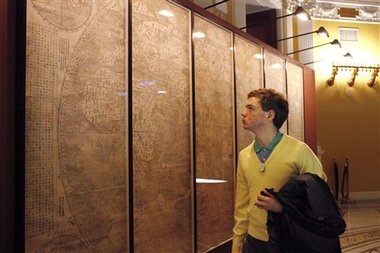
Andrew Muller, 16, of Hamden, Conn., looks at Matteo Ricci's 1602 map nicknamed the "Impossible Black Tulip of Cartography". The map is the first map in Chinese to show the Americas. (AP Photo/Jacquelyn Martin)
This map - one of only two in good condition - was purchased by the James Ford Bell Trust in October for $1 million, making it the second most expensive rare map ever sold. The library bought another of the world's rarest maps, the Waldseemuller world map, which was the first to name "America," for $10 million in 2003.
The Ricci map going on display had been held for years by a private collector in Japan and will eventually be housed at the Bell Library at the University of Minnesota. It map symbolizes the first connection between Eastern and Western thinking and commerce, said Ford W. Bell, co-trustee of the fund started by his grandfather, General Mills founder James Ford Bell.
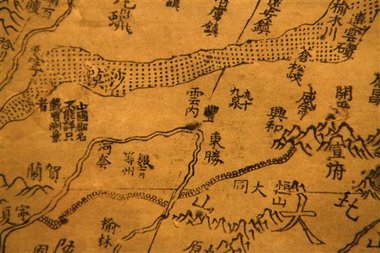
A detail from the China section of Matteo Ricci's 1602 map. (AP Photo/Jacquelyn Martin)
Custodians at the Bell Library focus "on the development of trade and how that drove civilization - how that constant desire to find new markets to sell new products led to exchanges of knowledge, science, technology and really drove civilization," said Bell, who is also president of the American Association of Museums. "So (the map) fits in beautifully."
The map was being shown publicly for the first time in North America. It measures about 3.7 by 1.5 metres and is printed on six rolls of rice paper.
The Library of Congress rarely exhibits artifacts it does not own because its holdings are so vast, but curators made an exception for the Ricci map. It will be on view through April alongside the Waldseemuller map and later will be shown at the Minneapolis Institute of Arts.
The library also will create a digital image of the map to be posted online for researchers and students.
Ti Bin Zhang, first secretary for cultural affairs at the Chinese Embassy, said the map represents "the momentous first meeting of East and West" and was the "catalyst for commerce."
No examples of the map are known to exist in China, where Ricci was revered and buried. Only a few original copies are known to exist, held by the Vatican's libraries and collectors in France and Japan.
Article from: Google.com/CanadianPress
Video from: YouTube.com
RedIce Radio:
Rand Flem-Ath - Atlantis in Antarctica, Solar Typhoons & When the Sky Fell
Rand Flem-Ath - The Lost Map of Christopher Columbus, The Piri Reis Map and the Mappa Mundi
Edmund Marriage - Kharsag, Garden of Eden and Stars and Stones Forum
Edmund Marriage - Global Catastrophe, Restart of Civilization & The Anu-Nagi (The Shining Ones)
Michael Cremo - Forbidden Archeology
David Flynn - The Giant's Geoglyphs of Tiahuanaco
Freddy Silva - Ancient Sacred Sites, Invisible Temples, Giants & Our Ancestors
John Kale - The Masonic Star Map of Charleston
David Hatcher Childress - The Mystery of the Olmecs & Ancient Civilizations
Marcus Allen - Crystal Skulls, Global Catastrophy, Collective Amnesia & Global Warming
